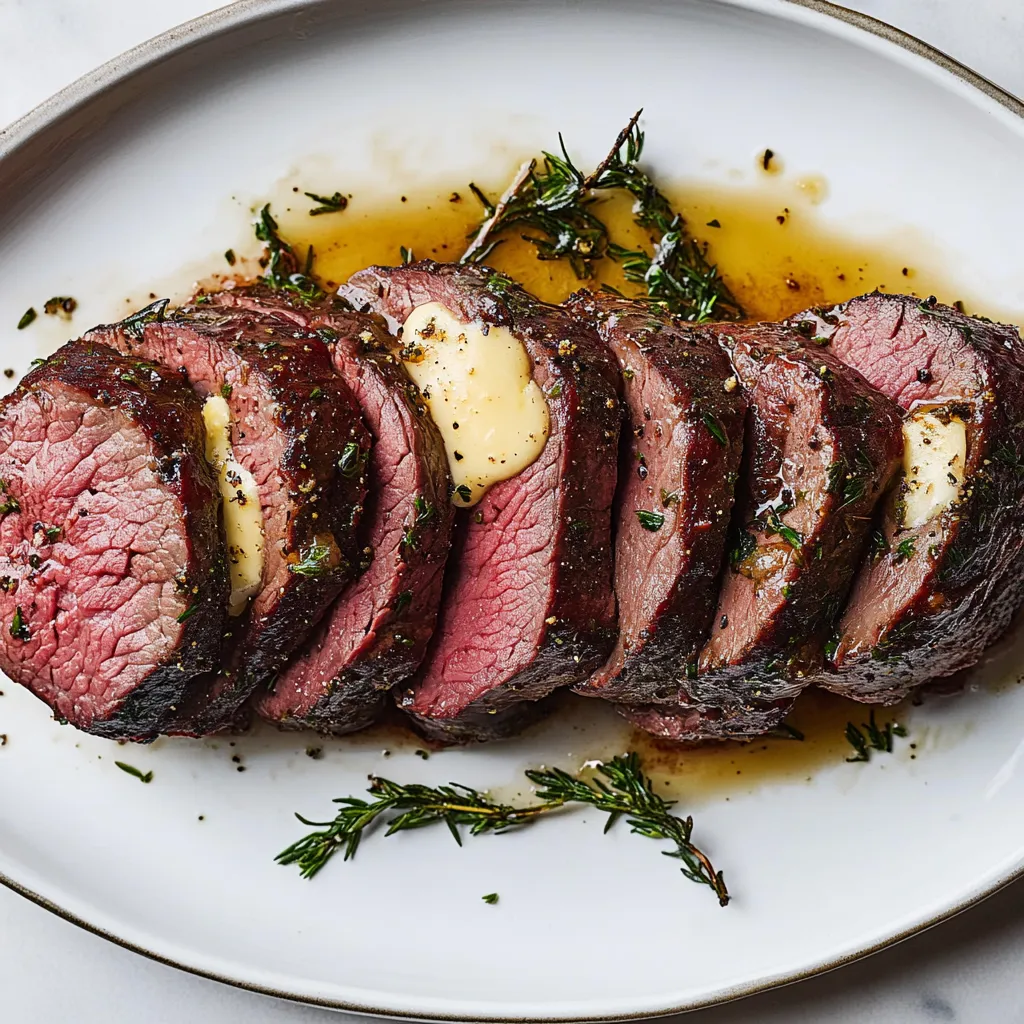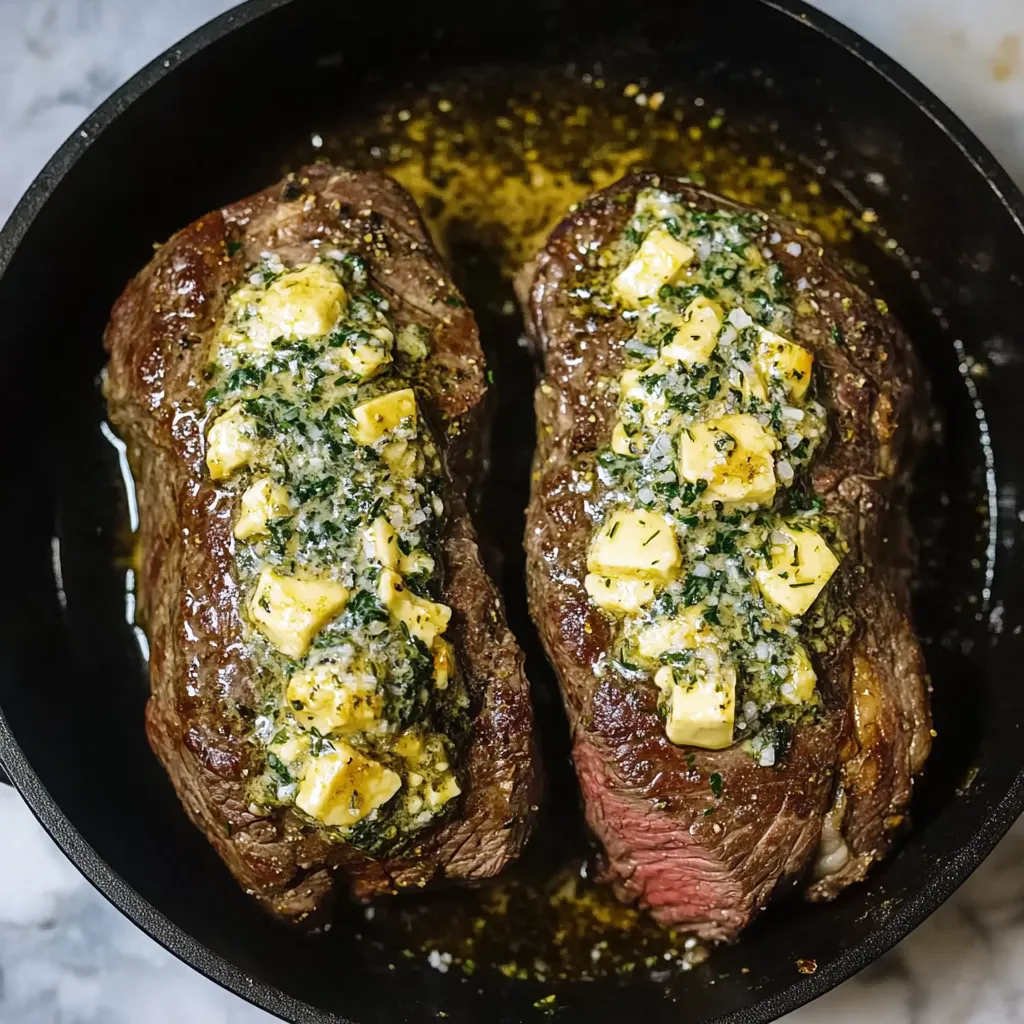 Pin it
Pin it
Beef tenderloin roast transforms your holiday table into a memorable feast with surprisingly little effort. This luxurious cut creates an impressive centerpiece that delivers mouthwatering tenderness with each perfectly pink, juicy slice. The simple garlic herb butter coating enhances the meat's natural flavor without overwhelming it, while the detailed cooking method ensures consistent results for even novice cooks. This is the special occasion dish that creates lasting memories around your table.
I've been making this tenderloin for our family Christmas gathering for nearly a decade now. Last year, my brother-in-law who typically avoids red meat helped himself to seconds and quietly asked me for the recipe afterward. There's something magical about how this particular cut, when prepared properly, practically melts in your mouth. It's become such a tradition that my nieces and nephews specifically ask if "the special beef" will be at dinner when they arrive for the holidays.
Essential Ingredients
- Whole Beef Tenderloin: The star of the show, this premium cut delivers unmatched tenderness and elegant presentation – select one that's been trimmed of silverskin but still has a nice layer of fat
- Unsalted Butter: Creates the base for the herb crust and helps conduct heat evenly across the surface of the meat
- Fresh Garlic: Adds aromatic depth that penetrates the meat during roasting – freshly minced delivers significantly more flavor than pre-packaged options
- Fresh Herbs: Rosemary and thyme create a classic flavor profile that complements beef beautifully without overpowering its natural richness
- High-Heat Oil: Avocado oil's high smoke point makes it ideal for achieving the perfect initial sear without burning
Step-by-Step Instructions
- Step 1:
- Bring the tenderloin to room temperature. Remove your 4-4½ pound beef tenderloin from the refrigerator 1-2 hours before cooking. This crucial step ensures even cooking from edge to center. Place it on a sheet pan and let it rest uncovered on the counter. Meanwhile, preheat your oven to 425°F (220°C) and position a rack in the middle.
- Step 2:
- Prepare the herb butter. In a small bowl, combine ½ cup softened unsalted butter, 4 minced garlic cloves, 2 tablespoons fresh chopped rosemary, and 2 tablespoons fresh thyme leaves. Mix thoroughly until well combined, then set aside at room temperature. The warmth of the butter will help release the aromatic oils from the herbs, creating a more flavorful crust.
- Step 3:
- Prepare the tenderloin. Examine your tenderloin – if one end is significantly thinner than the other, tuck the thin end underneath and secure with kitchen twine to create a more uniform thickness. Then tie the roast at 1-inch intervals along its length. This step ensures the tenderloin cooks evenly throughout and maintains its shape during cooking.
- Step 4:
- Season generously. Pat the tenderloin dry with paper towels to remove any surface moisture – this is essential for achieving a proper sear. Season liberally with 2 teaspoons kosher salt and 1 teaspoon freshly ground black pepper, pressing gently to adhere the seasonings to the meat. Don't be shy with seasoning; the salt particularly enhances the beef's natural flavors.
- Step 5:
- Sear to perfection. Heat 2 tablespoons avocado oil in a large cast-iron skillet over medium-high heat until shimmering but not smoking. Carefully place the tenderloin in the hot pan and sear each side for 2-3 minutes until a rich, golden-brown crust forms all around. Use tongs to turn the meat, being careful not to pierce it and release precious juices.
- Step 6:
- Apply herb butter and roast. Remove the pan from heat and slather the herb butter mixture evenly over the top and sides of the seared tenderloin. The warm meat will begin to melt the butter, helping it adhere to the surface. Transfer the entire skillet to the preheated oven and roast for 15-20 minutes for medium-rare, or until a meat thermometer inserted into the thickest part registers 120°F.
- Step 7:
- Rest before slicing. Transfer the roasted tenderloin to a cutting board and tent loosely with foil. Allow it to rest for 10-15 minutes before slicing. This resting period is non-negotiable – it allows the juices to redistribute throughout the meat, ensuring every slice is moist and flavorful. During this time, the internal temperature will continue to rise about 5-8 degrees.
- Step 8:
- Slice and serve. Remove the kitchen twine and slice the tenderloin into 1-inch thick medallions using a sharp knife. Arrange the slices on a warmed platter, drizzling with any accumulated juices from the cutting board. Serve immediately with horseradish sauce on the side for those who enjoy an extra kick of flavor.
 Pin it
Pin it
I'm particularly meticulous about the searing step. My grandmother taught me that a proper sear isn't just about appearance – it creates a flavor-packed crust through the Maillard reaction. When I first started cooking this dish, I'd rush this step and end up with a pale exterior. Now I patiently wait for that deep golden color to develop, which makes a remarkable difference in the final flavor. I've also learned to position the thinner end of the tenderloin in the cooler part of my oven to prevent it from overcooking while the thicker end reaches perfect doneness.
The Perfect Temperature Secret
The key to tenderloin perfection lies in understanding carry-over cooking. I've discovered that the internal temperature continues to rise 5-8 degrees after removing it from the oven as the residual heat moves toward the center. For my family's preferred medium-rare (125-128°F final temperature), I remove the roast when my thermometer reads exactly 120°F. This precision eliminates the disappointment of an overcooked, gray tenderloin, preserving that perfect rosy center that makes this cut special.
Serving Suggestions
Creating a holiday-worthy meal around this magnificent centerpiece is simple. I typically serve it with creamy horseradish sauce and a red wine reduction for guests to choose their preference. For sides, roasted garlic mashed potatoes absorb any meat juices beautifully, while green vegetables like roasted asparagus or Brussels sprouts with bacon provide color and textural contrast. A bold cabernet sauvignon or merlot completes the experience – the wine's tannins perfectly complement the rich, tender beef.
Make-Ahead Options
While the tenderloin itself is best roasted just before serving, several components can be prepared ahead to ease holiday cooking stress. The herb butter can be made up to three days in advance and stored covered in the refrigerator (just bring to room temperature before using). The tenderloin can be trimmed, tied, seasoned with salt and pepper, and refrigerated uncovered for up to 24 hours before cooking – this actually creates a better crust through a process similar to dry-aging.
This beef tenderloin roast has earned its place at our holiday table through years of memorable meals. What began as a culinary challenge has become a cherished tradition – the moment when the first perfectly rosy slice is revealed never fails to elicit appreciative murmurs from around the table. While it may be a splurge, the minimal active cooking time and guaranteed results make it well worth the investment for those special gatherings when you want to create a lasting impression.
Frequently Asked Questions
- → How do I know when my beef tenderloin is done?
- Use a meat thermometer: 125°F for rare, 135°F for medium-rare, 145°F for medium, 150°F for medium-well. Remember the temperature will rise about 5°F while resting.
- → Do I need to let the meat rest before slicing?
- Yes, let it rest for 10-15 minutes. This allows the juices to redistribute throughout the meat instead of running out when you slice it.
- → Can I make this beef tenderloin ahead of time?
- You can prepare the herb butter mixture ahead, but for best results, cook the tenderloin just before serving. Leftovers can be stored in the fridge for 3-4 days.
- → Why bring the beef to room temperature before cooking?
- Letting the beef sit out for 1-2 hours helps it cook more evenly. Cold meat from the fridge can cook unevenly with an overcooked outside and undercooked center.
- → What sides go well with beef tenderloin?
- Classic sides include mashed potatoes, roasted vegetables like carrots or Brussels sprouts, fresh salads, and dinner rolls. Horseradish sauce makes a great condiment.
- → Can I use dried herbs instead of fresh?
- Yes, but reduce the amount to 1/3 teaspoon each of dried rosemary and thyme since dried herbs are more potent than fresh.
